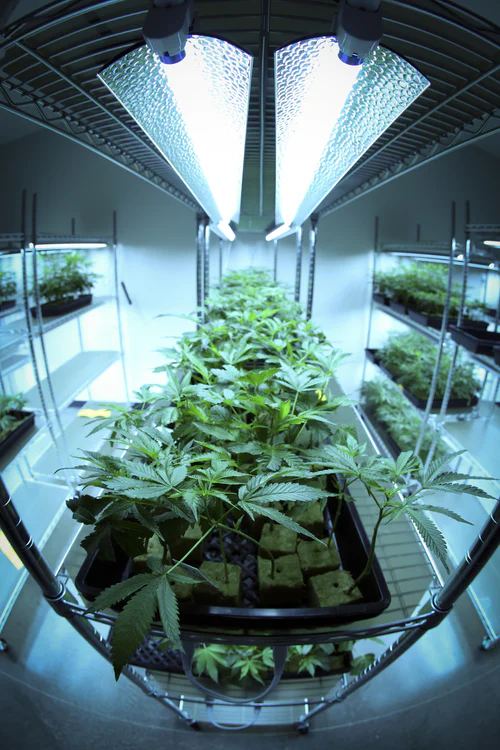- Like
- SHARE
- Digg
- Del
- Tumblr
- VKontakte
- Flattr
- Buffer
- Love This
- Save
- Odnoklassniki
- Meneame
- Blogger
- Amazon
- Yahoo Mail
- Gmail
- AOL
- Newsvine
- HackerNews
- Evernote
- MySpace
- Mail.ru
- Viadeo
- Line
- Comments
- Yummly
- SMS
- Viber
- Telegram
- JOIN
- Skype
- Facebook Messenger
- Kakao
- LiveJournal
- Yammer
- Edgar
- Fintel
- Mix
- Instapaper
- Copy Link
Introduction
Growing cannabis, especially in confined or discrete spaces, can be tricky. Light and space are essential. The more plants you wish to grow, the more space you will need. Vertical growing is a system of tiered shelves or straight upwards.
A vertical planting system can double the amount of space available for cultivation when compared to horizontal sprouting. A large number of shelves can be stacked on top of one another around a central light. The result is impressive and yields are the same with a sea of green methods. Head over at Homegrown Cannabis Co. for quality seeds available online.
Stacking them on shelves or arranging them with trellises and strings reduces the amount of space eaten by them, letting you raise more plants. It is also more efficient in energy use and produces fewer environmental impacts.
Understanding Vertical Cultivation
Consider the idea that the pots can be positioned horizontally 45 degrees upwards and will allow the plants to grow outwards and upwards. Imagine flipping an indoor grow 90 degrees and placing it on a wall. This approach is often the underlying principle behind vertical growth. This approach involves the sunlight being targeted towards multiple growth planes instead of just one.
The efficient method of horizontal growing has been utilized for many years to produce some of the greatest indoor weeds the world has ever seen. However, this manner of growing may soon be eliminated for large-scale commercial operations that prefer to harvest much greater yields within the same space.
An Overview Of The Vertical Indoor Garden
Growing vertically takes the idea of upright cultivation to a whole new level. Vertical growing is essentially transforming conventional farming methods. An upright design can give 70 to 90% water efficiency over a horizontal structure and boost canopy space eight times over. There are many iterations of what a vertical farm is all about, but vertical farms aim to save space, save energy, and increase yields.
With sprawling commercial cannabis cultivation facilities all over North America, it’s no wonder these operations are expensive. From vital company land to huge energy bills and significant staffing, maintaining and germinating marijuana seeds isn’t cheap. Most cannabis growers prioritize maximizing space and reducing operating costs. As such, single-level, horizontal farms are becoming less popular as operators reduce operating costs, increase yields, and improve efficiencies.
There are a variety of vertical growing alternatives for cannabis farms. From aeroponics to hydroponics to soil, cannabis producers have devised new ways to “grow up” rather than out.
Vertical Growing Maximizes Obtainable Space
Think of a floor covered with horizontally grown cannabis plants with large lights overhead. Now imagine, however, a warehouse crammed with towering racks, walls stacked two-stories high, covering each frame with cannabis plants. Each shelf is lit up by a large light.
A parallel logic can also be applied to small grow-ops, using an equivalent proportion of growing cannabis within an equivalent space using vertical growing techniques. Let’s take a closet with a single marijuana plant sitting beneath a light-bulb. Now, let’s imagine a rack placed on the most important wall up the shelving unit, growing multiple plants in it, and placing the light in the middle of the space.
Pan And Get Started
One of the most important things to consider before installing a vertical system in your grow room is that these systems are primarily meant to hold a lot of plants in them. This isn’t a system for smaller growing operations but can be adopted. Basically you want to stack the plants up from the bottom to the top, so you have a lot of extra plants to think about. These extra plants might get you into trouble if you have over 100 plants in your grow room.
Having more plants means you ought to have more mother plants, too – which means you’ll need more space and electricity. This may make things a bit more tedious at first, since you will need more mother plants. Additionally, refilling your vertical growing system with the plants from the cuttings is time-consuming. Check out https://homegrowncannabisco.com/feminized-seeds for more seed selection according to your needs.
Stem-Cultivation in Hydroponic Vertical Farming
There are some kinds of hydroponic systems that use materials such as mineral wool, coconut husks, and clay pellets. Some hydroponic solutions aren’t suited to each vertical application. Although the concept revolves around removing the soil from the equation and supplying the roots with a water-based nutrient mixture, it is still designed to ensure water resources are effectively targeted at the plant and water is recycled back to the system for reuse.
Several research studies have demonstrated that hydroponic vertical farming is profitable and reduces waste. Two systems are also suitable for vertical farming: Nutrient Film Technique (NFT) and Hydroponic Stairs.
Based on an exact vertical method fed by closed-loop hydroponics, Cultivation’s all-inclusive platform claims to consistently yield 5 times more pot per square foot of land for a fraction of the start-up and ongoing costs of an indoor nursery with the same footprint.
Additionally, plant boxes possess many benefits such as growing at more capacity, providing greater efficiency and securing a higher margin. Additionally, that also makes it easier to reduce costs, sell for more money, and remain competitive in the market when prices fall.
In Conclusion
Most ask for stacked growing systems as a vertical-growing solution. However, stacked systems are actually located horizontally, replicated, and placed on top of each other. At this level, there is still a need for a separate source of lighting, staff to maintain the lighting, and a mechanism to move or rotate the plant from the top of the plant to an area where growers can easily reach the plants.
Hydroponics and soil-based systems are the most accessible options for stacked farming indoors. Rooms are typically set up with 2 to 3 rows of plants on their own, so yields are usually improved, but costs are not lowered much. Because of the double-up of equipment and resources necessary for each level of cannabis cultivation, stacked arrangements may lead to higher production costs.
Cannabis growers are pushing the boundaries of innovation upwards with vertical farming techniques and equipment. Whether the tactic requires soil, hydroponics, or aeroponics, vertical growing production can help cultivators increase production without a bigger footprint.


